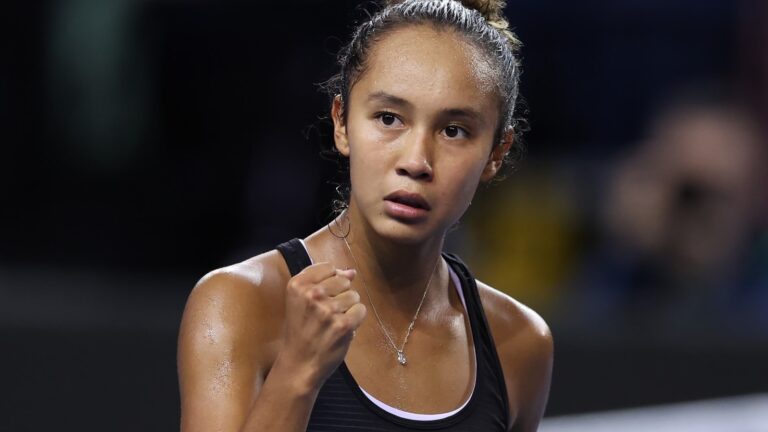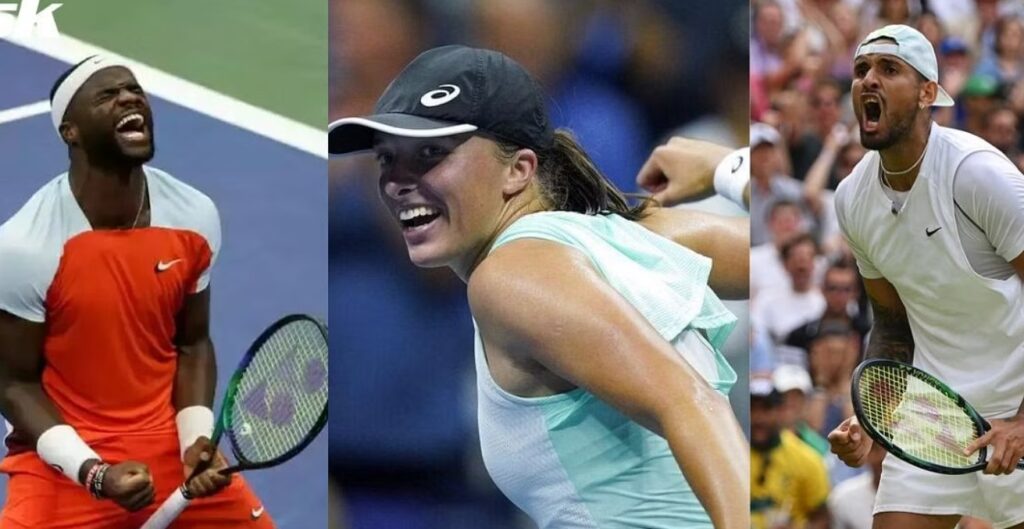
Photo : Sportskeeda
On the June solstice, after Roland-Garros and before Wimbledon during one of the most frenetic stages on the tours, Netflix dropped the second instalment of the first season of its tennis docuseries Break Point.
The final five episodes pick up where the previous ones left off in 2022 and follow the same players, including Nick Kyrgios, Ajla Tomljanovic, Ons Jabeur and Taylor Fritz, from Wimbledon to the US Open.

But this time, it’s for different reasons.
I enjoyed the new episodes as much as the earlier ones. They delve into the players’ thoughts and feelings and provide virtually full access to their social, family and love lives, making for images and conversations fans aren’t usually privy to. It’s a great documentary format that Netflix has made its specialty with similar offerings like Formula 1: Drive to Survive and Full Swing.
Read also: The Dawn of a New Era on the WTA Tour
In this second part, the series regulars are joined by Iga Swiatek, Frances Tiafoe, Stefanos Tsitsipas and Aryna Sabalenka.
There is laughter, and there are tears.
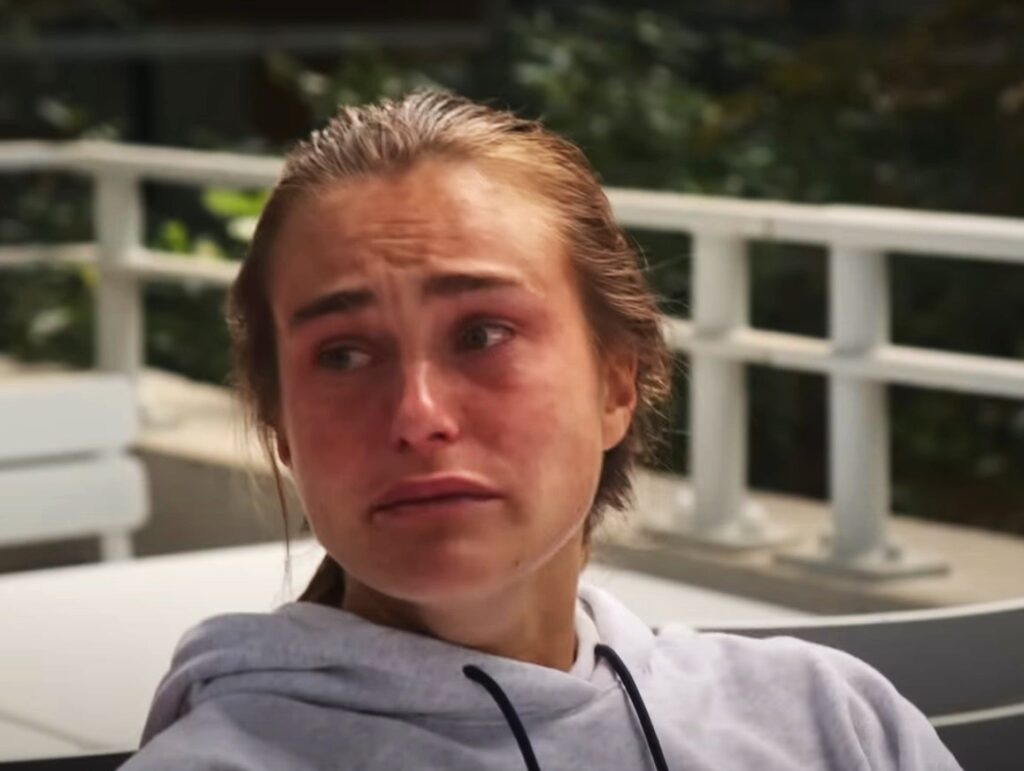
Netflix’s strategy was to bet on a few players and follow them closely over the course of the season. In the first episodes, we watched Nick Kyrgios push to win the AO men’s doubles title with Thanasi Kokkinakis at home in Melbourne back in January and followed Californian Taylor Fritz on the road to his unexpected feat in Indian Wells.
The new episodes showcase similarly exciting stories, like Frances Tiafoe bulldozing Rafa Nadal at the US Open on a dazzling semifinal run.
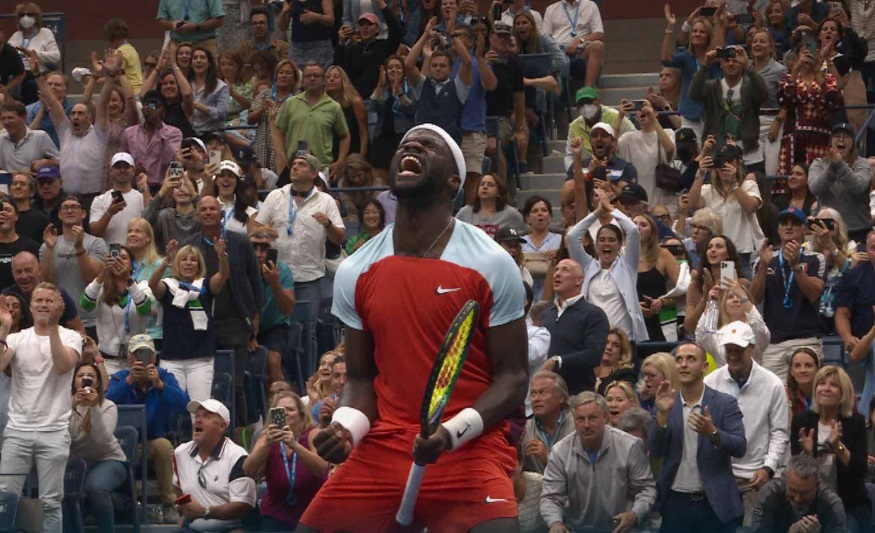
There’s also Kyrgios’ wondrous appearance in the Wimbledon final complete with snippets of his off-court clash with Tsitsipas and some honest talk about his personal struggles and suicidal thoughts.

And, of course, there’s Serena’s last match, which came to an end at the hands of the unlikely Ajla Tomljanovic, whose quest and relationship with her dad and coach Ratko (who seems like quite a character) are quite moving.
It’s riveting TV, for sure.

Still, Break Point isn’t perfect.
The choice to follow certain players necessarily means some of the year’s major moments don’t get much airtime. Like Carlos Alcaraz, for example, who’s incredible season, first title and ascension to World No.1 at the US Open final take up all of a minute of the series.
Read also: Is Carlos Alcaraz a Contender at Wimbledon
Also, diehard fans may not appreciate how the sequences are edited, since the focus was clearly on creating a sleek and spectacular emotionally-driven show rather than relaying matches.
Most of the action on the courts is just alternating shots of players who were filmed with a camera solely on them, and the result is jolty back-and-forth that isn’t fun to watch for viewers who are used to following tennis on TV.
But that’s just a slight annoyance.

The series was never intended to be a tennis report or recap. Instead, it aims to help viewers transcend all that by giving them a glimpse into what these elite athletes really feel and experience. It’s a lofty goal Netflix absolutely aced.
Read my thoughts about the first episodes (January 18) here.
National Bank Open: equal pay by 2027
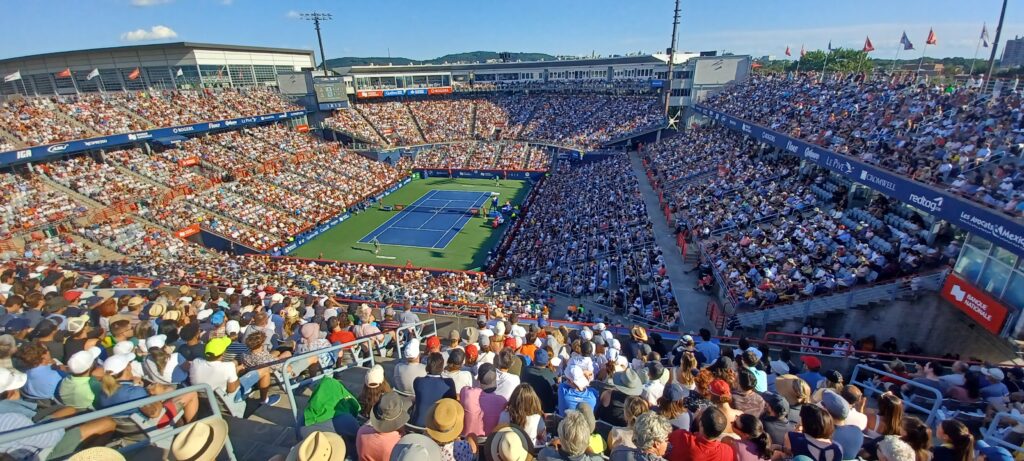
Tennis Canada and the National Bank Open (NBO) are pursuing their mission to create a more equitable world.
Under the Game. Set. Equity. initiative, equal prize money for the women who compete in Canada stood out as a critical milestone for the tennis federation, which oversees the tournament.
And that milestone will become a reality in 2027.
At a press conference on June 27, Tennis Canada confirmed that the amounts it awards to the WTA players will be increased annually to achieve pay equity by 2027. Click on this link for all the details on the announcement:
Read also: Financial Gains for Women’s Tennis
The pay gap is an inequity that’s been criticized for years, and Tennis Canada’s efforts to provide equal opportunities for girls and women have reached a new level.
“This is a really exciting day for professional tennis in Canada,” said Gavin Ziv, Chief Tournament Officer at Tennis Canada, who emphasized the support demonstrated by the WTA and the event’s title sponsor National Bank.
Read also: The Five Biggest Cinderella Stories at the National Bank Open in Toronto
“From the very beginning, our vision included the goal of providing equal prize money. (…) It will support and benefit all tennis players and fans, but more importantly, it will empower more girls to get involved in tennis because they’ll know that everyone can have the same opportunities to grow equally in the sport,” said Lucie Blanchet, Executive Vice-President, Personal Banking and Client Experience at National Bank of Canada.
Tournaments of all levels are gradually moving towards pay equity, and it’s worth recalling that most were preceded by the majors.

Here’s a quick timeline:
- US Open, 1973: Fifty years ago, the US Open blazed the trail and handed out the same cheques to both singles champions. Margaret Court celebrated her 24th and final Slam crown and earned just as much as fellow Australian John Newcombe.
- Australian Open, 1984: Thirty-nine years ago, the AO followed suit and paid Chris Evert and Mats Wilander equally. In 1996, citing lower TV ratings for women’s tennis, the tournament reversed its decision but eventually came (back) to its senses in 2001.
- Roland-Garros, 2006: Justine Henin and Rafael Nadal raised the winner’s trophies and closed the gender pay gap in Paris 17 years ago.
- Wimbledon, 2007: Sixteen years ago, Wimbledon joined the other three Slams in offering equal pay. Venus Williams was the first to benefit when she cashed a cheque that was just as hefty as Roger Federer’s.
=======================================================
Email: privard@tenniscanada.com
Twitter : @paul6rivard
Follow all our Canadians in action here.

